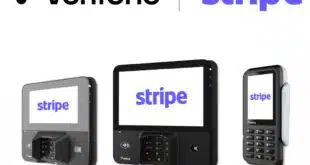With its Visa Digital Enablement Program, announced last week on the same day Google Inc. unveiled Android Pay, Visa Inc. has introduced application programming interfaces for card-issuing institutions to link to potentially thousands of digital-payments services with a single integration and without separate business agreements for each.
Visa also hopes to make those arrangements virtually cost-free for issuers. Services that connect to VDEP agree not to levy fees. And with VDEP Visa itself has decided to permanently waive the tokenization fees it devised last year and put on a temporary hold. The fees reportedly included a 7-cent charge for each token and 2 cents for each decline.
“We’re waiving them altogether, as long as the issuer is processing with us,” Jim McCarthy, executive vice president for innovation and strategic partnerships at Visa, tells Digital Transactions News. “We’ve put our money where our mouth is.”
Android Pay is the first so-called token requester to participate in VDEP. For now, mobile and online payments services are a somewhat contained number. But McCarthy foresees many more. “I can see every card-on-file merchant looking for tokens to replace cards,” he says. “I can easily see thousands of token requesters. Android Pay is the first of what I hope will be many.”
That’s where Visa says VDEP will make things easier. Instead of confronting commercial contracts and integrations individually with each service, issuers will be able to turn on a service with a single connection to Visa. “An issuer will have the ability to throw a switch,” notes Rick Oglesby, a senior analyst at Double Diamond Group, a Centennial, Colo.-based consultancy who follow mobile payments.
As popular as Apple Inc.’s Apple Pay mobile-payments service has proven to be, issuers have had to read and approve contracts and build connections that work with just that one system. That slows things up and makes it harder to build mass acceptance, especially for multiple services, says McCarthy.
“Apple created a great product, but we didn’t have a commercial framework,” he says. “When you see how long it takes, it just doesn’t scale. Having a commercial framework makes things scale a lot faster.” Some 2,300 financial institutions have linked to Visa’s token service in support of Apple Pay since its October launch. Of these, nearly 300 have completed technical connections to Apple and are supporting transactions.
Nor will the sort of fees issuers have to pay for Apple Pay transactions be permitted with VDEP connections. Apple charges issuers 0.15% on each credit card transaction and half a penny for each debit payment. “Any token requester that agrees to VDEP agrees to let any issuer get access to their platform at no cost,” says McCarthy.
The idea, he says, is to keep transaction costs from hindering the build-out of digital-payments services. “This is good for everybody to plumb the world” for digital payments, he says.
Google’s decision to sign up Android Pay for VDEP may have historical roots. VDEP is an outgrowth of a tokenization service Visa began planning in 2013 and saw come to full fruition with the launch of Apple Pay. But the tokenization service itself stemmed from an early version of the 4-year-old Google Wallet. That version relied on a MasterCard prepaid card on the front end and a network-branded card on the back end designated by the user.
Acting as the issuer, Google collected card-present interchange on the prepaid card but then paid higher card-not-present interchange when it filled the role of the merchant for the user's network-branded card.
The arrangement provided a sort of tokenization, McCarthy says, but was also hard for the networks to swallow, since users could choose any of their cards without prior agreement from either the issuer or the network. “The genesis of our token service was Google [Wallet], where they broke the network model,” he says. “So we began working with Google on a token model.”
Now, with VDEP, that model takes a major step forward, McCarthy says. “We’re trying to make it easy,” he says. “With this, you get access to all the token requesters for free, the data is your data, it’s in the issuer’s control. [And] you don’t have to sign a bunch of contracts.”
This is a role well-suited to Visa, says Oglesby. “As a network, it’s well-positioned to be the intermediary technology player that can interface with the token requesters,” he notes. “And between Google and Apple, it now seems to have solidified its role there.”





